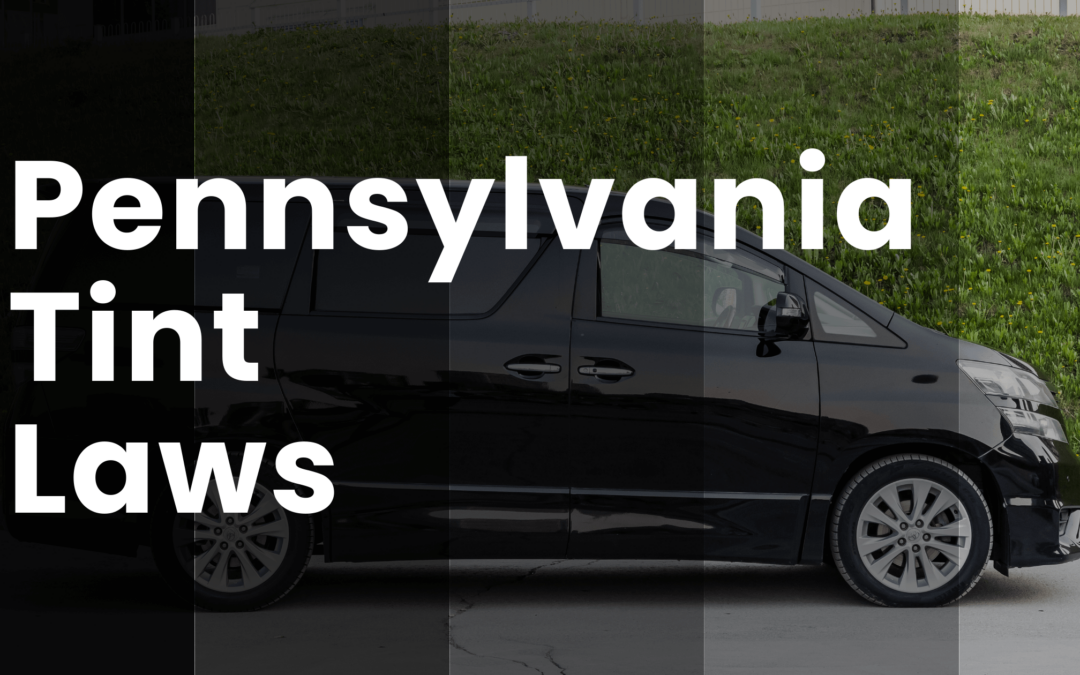Pennsylvania Tint Laws
Understanding Pennsylvania’s window tinting laws is essential to ensure compliance and avoid legal issues. These laws, established in 1999, are comprehensive and set specific guidelines for window tint darkness, reflectivity, and more. Here, we provide a detailed overview of Pennsylvania’s car window tinting laws.
Disclaimer
While I have a background in commercial law and strive to provide accurate and informative content, it’s important to note that I am not a legal expert. The information presented in this blog is based on my interpretation of the subject matter, and laws can vary by location and change over time. It is strongly recommended that readers verify all sources of information and consult with legal professionals or relevant authorities before making any decisions related to tint laws.
Understanding the Terminology Regarding Tint Laws
The most important part of the legislation is understanding what VLT is and how law enforcement services check or test the percentage.
What is VLT
VLT, or Visible Light Transmission, is a measure of the amount of visible light that can pass through a window tint or film. It is commonly used to determine the darkness or opacity of window tints, and it’s an important factor in window tinting laws and regulations.
VLT is typically expressed as a percentage. For example, a window tint with a VLT of 20% allows only 20% of visible light to pass through, making it relatively dark and less transparent. Conversely, a window tint with a VLT of 70% allows 70% of visible light to pass through and is much lighter and more transparent.
How do Law Enforcement services test the VLT percentage?
Window tinting laws vary by jurisdiction, and they often specify the maximum allowable VLT for different types of windows on a vehicle, such as the front windshield, front side windows, rear side windows, and rear window. These laws are designed to ensure that drivers have adequate visibility and that law enforcement can see into vehicles for safety and identification purposes. The manner that they go about testing the VLT is by using a VLT gauge/meter.
Here is a YouTube Short from @TrafficServices and @TorontoPolice showcasing the device and how it works. Even though it is in Canada, it still is helpful to understand how the tint darkness is measured.
Window Tint Darkness in Pennsylvania:
Pennsylvania’s regulations stipulate the percentage of visible light (VLT – Visible Light Transmission) allowed through your vehicle’s windows, with variations for sedans and SUVs/vans.
Pennsylvania Car Tint Law For Sedans:
- Windshield: Must allow over 70% of light in, with an exception allowing any darkness on the top 3 inches.
- Front Side Windows: These windows must permit over 70% of light to pass through.
- Back Side Windows: The back side windows must also allow over 70% VLT.
- Rear Window: Similar to back side windows, the rear window must allow over 70% of light in.
Tint Law For SUVs and Vans in Pennsylvania:
- Windshield: The windshield for SUVs and vans must also allow over 70% of light in, with an exception allowing any darkness on the top 3 inches.
- Front Side Windows: Front side windows for these vehicles should permit over 70% of light transmission.
- Back Side Windows: SUVs and vans do not have specific restrictions regarding the darkness of tints on back side windows.
- Rear Window: Like back side windows, there are no specific regulations for the rear window.
| Type of Window | Sedans | SUVs/Vans |
|---|---|---|
| Windshield | Over 70% of light, except top 3 inches can have any darkness | Over 70% of light, except top 3 inches can have any darkness |
| Front Side Windows | Over 70% of light transmission | Over 70% of light transmission |
| Back Side Windows | Over 70% VLT | No specific restrictions on tint darkness |
| Rear Window | Over 70% of light | No specific regulations for tint darkness |
Window Tint Reflection in Pennsylvania:
Tints can reflect incoming light, reducing glare and heat. Pennsylvania’s tint law allows a certain level of window reflection when using tints.
Reflectivity Law For Both Sedans and SUVs/Vans:
- Front Side Windows: Reflectivity should not present a mirrored or metallic appearance.
- Back Side Windows: Similar to the front side, back side windows must not have a mirrored or metallic appearance.
Additional Pennsylvania Window Tint Rules and Regulations:
Pennsylvania’s window tinting laws encompass various crucial regulations:
Side Mirrors
If any window behind the driver is tinted, dual side mirrors are mandatory.
Restricted Colors
While the law doesn’t explicitly ban specific tint colors, certain color-altering materials are discouraged.
Certificates
Unlike some states, film manufacturers are not required to certify the film they sell in Pennsylvania.
Stickers
Pennsylvania mandates the use of stickers to identify legal tinting.
Medical Exceptions
Pennsylvania allows medical exemptions for special tint, recognizing the importance of such exemptions for individuals with medical conditions.
Regulations for Out-of-State Drivers
The same regulations apply to out-of-state drivers as those for drivers living in the State.
If you are from States such as Ohio, West Virginia, New York, Maryland, and New Jersey, you are expected to abide by these laws and regulations.
It’s important to note that interpretations of Pennsylvania’s tinting laws may vary across counties or residential areas. To ensure complete compliance, it’s advisable to cross-verify this information with your local Department of Motor Vehicles (DMV) or law enforcement authorities.
Our information regarding Pennsylvania’s window tint laws was most recently updated in 2023. We are dedicated to providing accurate, up-to-date information, and should you come across any inaccuracies or outdated details, please don’t hesitate to contact us. Your trust in our resources is invaluable, and we’re committed to offering the most reliable information available.

